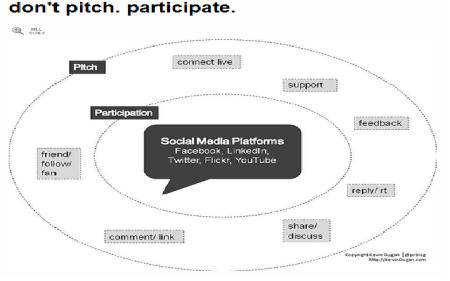 There are many ways businesses harness the power of word of mouth to drive brand awareness, sell more products and drive demand and engagement online. There is little doubt that your customers are your No. 1 asset when it comes to marketing. Associating your brand with positive word of mouth and validation by the customer is a win-win situation for any brand.
There are many ways businesses harness the power of word of mouth to drive brand awareness, sell more products and drive demand and engagement online. There is little doubt that your customers are your No. 1 asset when it comes to marketing. Associating your brand with positive word of mouth and validation by the customer is a win-win situation for any brand.
This is true of Lumension’s brand as we’ve held steady in our commitment to leveraging customer success stories in our marketing and PR efforts. And it’s paid off. Why? Because our customers are the ones in the trenches every day, facing and addressing business challenges. Getting happy customers to provide testimonials of how your technology, solution or services are helping to define and address their business critical areas is key to communicating to other prospects that this could be the right solution for them as well.
There’s been a dynamic shift in the way people make buying decisions. They’re not blindly turning to marketing collaterals and Web sites to make those decisions. Instead, they’re turning to their peers, friends, online communities, Wikis and even YouTube to research and develop their own opinions. So wherever you can place your customers to help engage and spread the message is potent.
Technology and social media channels have created greater avenues to intensify our efforts and spread the customer message and validation. To do a great job on customer marketing, it takes a concerted effort on the part of marketing/communication and PR teams to outline a customer marketing strategy that incorporates key communication channels. Below are 5 steps to a winning customer marketing strategy that includes success stories, videos, whitepapers, blogs and PR.
1. Define a Customer Success Program
Every organization should have a Customer Success Program, which should include the following:
- Define a strategy – Without strategy, it’s all meaningless tactics. This strategy should include the types of customers, vertical markets, specific pain points/challenges, solutions, etc., that you’re targeting with this program. Lastly, you should include how you’re planning to market it and what types of channels you’re focusing on to get the message out. Once you’ve laid this foundation, meet with key stakeholders to review, edit and finalize this strategy.
- Objectives for the program – Second, understand what you’re hoping to accomplish through this program. The Customer Success Program should first and foremost address why customers should join this program and how it benefits them. Every brand has a story, and getting your customers to share their experiences with your brand is the first step. Communicate how your company wants to tell its story to the world through this program. Create a brochure that includes customer testimonials on how the Customer Success Program has been instrumental to their organization. The brochure should also include key samples/links of other customer success stories. When you’re putting the plan together, this needs to be a cross-functional effort. Work with your sales management and key executives to really understand what incentives they’re willing to give to the customer in exchange for participation in the program. This information will help solidify your plan.
- Sell it internally – Finally, getting the internal teams on board is crucial to successfully executing this plan. Once you have the external Customer Success Program, you need to have an internal version as well. This helps rally the troops and gets them to sell your plan for you, especially the sales team since they’re face-to-face with the customers all the time. The plan should answer the question: “What’s in it for me?” Just as you have created incentives for the customers, you will need to think of incentives for the internal teams.
- Setting up the process – Once you have all this, now you will need a process. How does this work, and what can the sales team do when customers are interested? The steps should be fairly simple. Identify the customer. Set up customer screening calls to walk them through the process, and send them the Customer Success Program materials in advance. Make sure the customer understands that before you begin the project, they will need to get an internal approval from the marketing or legal team. Once you have that, you should have a set of questionnaires to help you write the customer success story. Be sure to cover all grounds – including media opportunities that your team will seek once the story is approved. There are different ways to tell the story — written success stories (two to three pages that include an overview of the customer, challenges, approach and solution/ROI), video success stories and ROI whitepapers (that detail and highlight ROI from using your products/services).
2. Videos are the Future to Content Marketing
With YouTube being the second most used search engine for content and research, videos are the way of the future. Given my journalism background, I’m always inclined to tell a story through videos and images. Capturing the story and adding a voice and face to a story can prove to be powerful. Do your research and find out what type of videos you want to create with your customers. Every time you write a success story, you should be creating a video success story. See sample here. Hire a freelance videographer or photojournalist to shoot b-roll and customer interview and put it all together. Give them samples of what you’re looking for.
3. Why ROI Sells
This may be the hardest part to get the customer to agree to, but try it anyway. If there is an ROI element to it, sell them on why they want to go with an ROI whitepaper versus a simple two- to three-page success story. This is an extensive process that dives deep into how the customer is using the product, what sort of tangible ROI they are seeing and how the product/services has benefited their organization. See sample here (registration is required).
4. Customer Media Coverage
Publications are always looking for customer war stories, and the best way I’ve seen to get feature and standalone coverage is to get customers to sell your story for you. This is on par with a good product review. Who needs a product review when a news outlet just published a customer’s story on how they are addressing industry specific challenges? This is also true of vertical publications. By securing a media opportunity, you’re not only building a powerful brand position, you’re making a superstar out of your customer. For example, we reached out to the Wall Street Journal to get coverage for one of our customers on the mobile computing threat. The WSJ reporter loved the idea of getting a live person on the phone to walk him or her through the types of risks mobile devices were posing to the organization. The great part was the customer actually talked about how our product was key to keeping their data secure with so many new devices connecting to the network. On that note, it’s important to have your customer reference list (those who have signed on to be media references) for outreach outside of the success story.
5. Market the Customer’s Success Through Integrated Approach
You have all these great customer assets. The big question remains: How do I effectively market the customer’s success? Simple. Take an integrated approach. There are great marketing opportunities to include these stories into the overall mix.
- Market it in your monthly customer or nurture newsletters (under customer highlights)
- Build a webcast or podcast version of the customer success story, and promote it via YouTube and iTunes (even look into distributing it on Kindle)
- Create a social media news release to distribute with links to the success story, videos, etc.
- Invite the customer for a Q&A blog post and add appropriate links to their other assets
- Secure speaking opportunities (where relevant) for the customer to tell their story via other platforms
- Submit them for awards (where appropriate) based on their war story and unique approach
- Send it to all the internal teams so they can use it as a selling tool
In this day and age where dollars are short and marketers are being asked to be nimble and flexible with our strategies, it’s important for us to leverage the assets we have in our toolbox. Customers are your greatest marketing assets, and understanding key ways to harness their word-of-mouth impact will prove to be crucial to your organization’s success.





